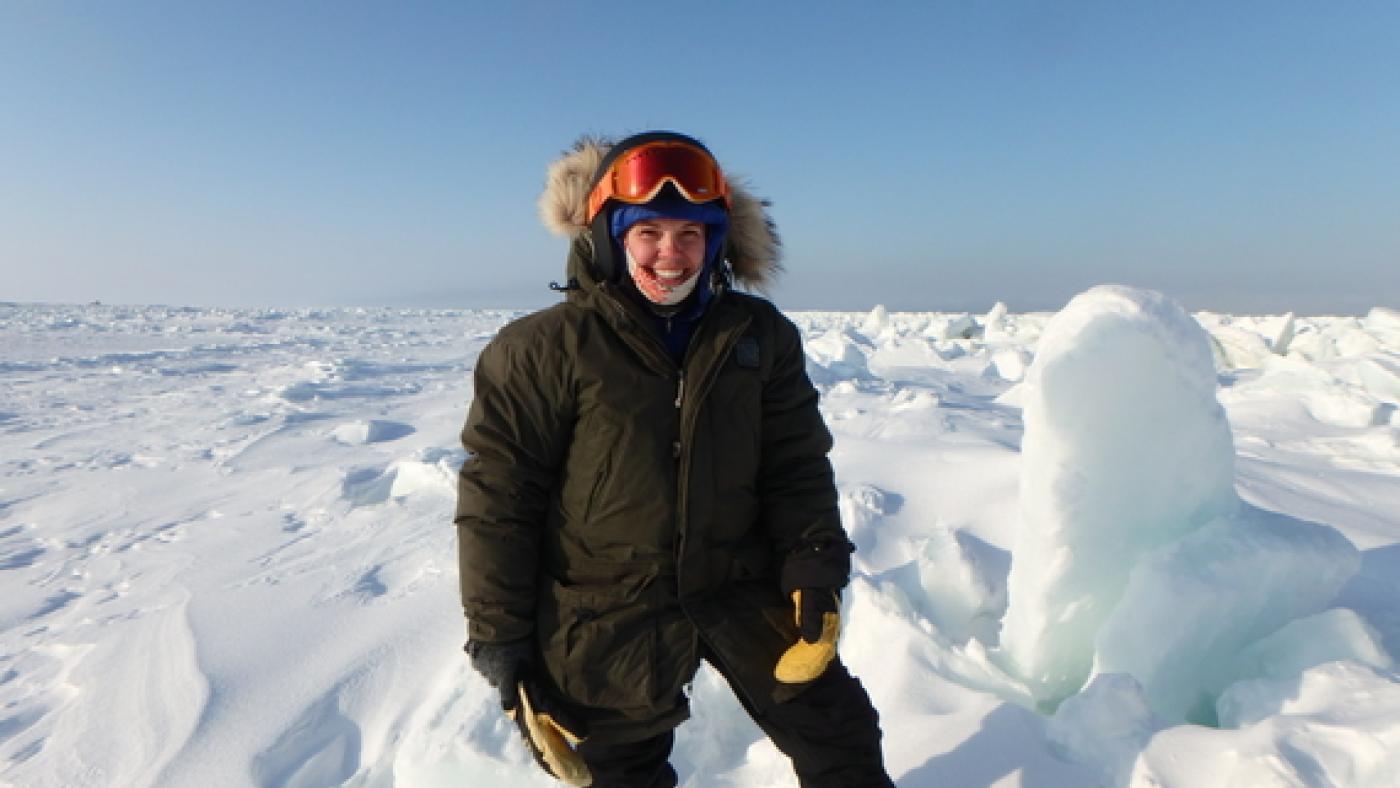The northernmost town in the United States may be remote, but it’s not disconnected.
As of this spring, environmental educator Sarah Johnson ’16 is doing her part in bridging the Arctic to the rest of the world by telling the story of a research team stationed in Utqiaġvik (“oot kay-ahg vik”), Alaska.
Johnson, who earned a master’s degree from Hamline in natural science and environmental education, joined the International Arctic Buoy Program as an outreach officer on March 27 for a two-week stint in northern Alaska. The program, which aims to explore new landscapes and learn from cutting-edge scientists, is led by the University of Washington’s Polar Science Center and the Office of Naval Research International Cooperative Engagement Program for Polar Research.
Johnson’s team is deploying weather stations, housed in buoys, in remote areas.
“These are not the kind of buoys that are on lakes in Minnesota, these are drifting buoys, meaning they’re not tied down,” Johnson said. “We will be doing everything it takes to get these buoys onto the largest pieces of sea ice we can find.”
The team travels by snowmobile to the edge of the ice, and sometimes flies helicopters up to 100 miles off land, to plant buoys on massive pieces of sea ice. Once activated, the buoys transmit signals containing weather data multiple times a day. The data is publicly distributed via satellite.
“That data is used every day by the World Meteorological Organization to create weather forecasts in the northern hemisphere,” Johnson said.
The data, which details sea ice movement and ocean currents, is also used by commercial fisheries and the military for navigational purposes.
“The US Navy Office of Naval Research and the National Science Foundation are huge funders of this (project),” Johnson said. “There is a whole list of domestic and international organizations that are invested in this data because they rely on it … And of course anybody and everybody who studies climate change may use this data.”
Not only is the Arctic Ocean being studied by climate scientists, but also by commercial interests, as diminishing sea ice leads to greater access across the region.
“Open water in the Arctic is becoming longer lasting over the course of a year, so there are projections that will keep increasing – and that means the possibility of shipping,” Johnson said. “With all the shipping that relies on the Panama Canal and other ways around the planet, there is a big eye on the Arctic for reliable shipping corridors (over the next century).”
Johnson, the founder of Wild Rose Education, is an independent environmental educator who helps technical experts be better facilitators, communicators, and educators. She serves as the outreach officer for the project’s science team.
“This whole project is about really accurate, reliable observations that are critical to all these other institutions and industries and our understanding of the planet, and that’s what I’ve been doing for years – teaching people how to see and how to make observations and be scientific about it and communicate what they observe,” Johnson said.
The Arctic project is a perfect fit for Johnson, matching her passion for science education with her enthusiasm to venture into wild places. It’s also a natural progression for the Hamline grad, whose master’s thesis focused on investigating how biological field research stations around the US build relationships through exemplary teacher professional development.
Johnson’s Hamline research brought her to several field stations, where she engaged with educators and technical experts to observe how they were translating their work into something a K-12 teacher could use in the classroom.
“That opportunity to do a big meaningful project and to do that case study work has absolutely affected my future of everything I’ve done since 2016,” Johnson said.
Johnson, who earned her undergraduate degree at Missouri State University in 2005, waited a decade before attending Hamline. After losing out on several job opportunities to candidates who had advanced degrees, Johnson set her sights on grad school. She was drawn to Hamline after seeing multiple friends complete the environmental education program while managing full-time jobs.
“Hamline was accessible,” said Johnson, who studied in a hybrid program while living in Colorado. “And Hamline was affordable. Somehow, I don’t understand why, but Hamline’s master’s program did not put me under. I was able to afford it and pay it off really quickly.”
With the spring expedition concluded, Johnson will return to the Arctic next year for additional outreach work. Catch up on the spring expedition and watch out for updates by following her Arctic blog at wildroseeducation.com/arctic.
